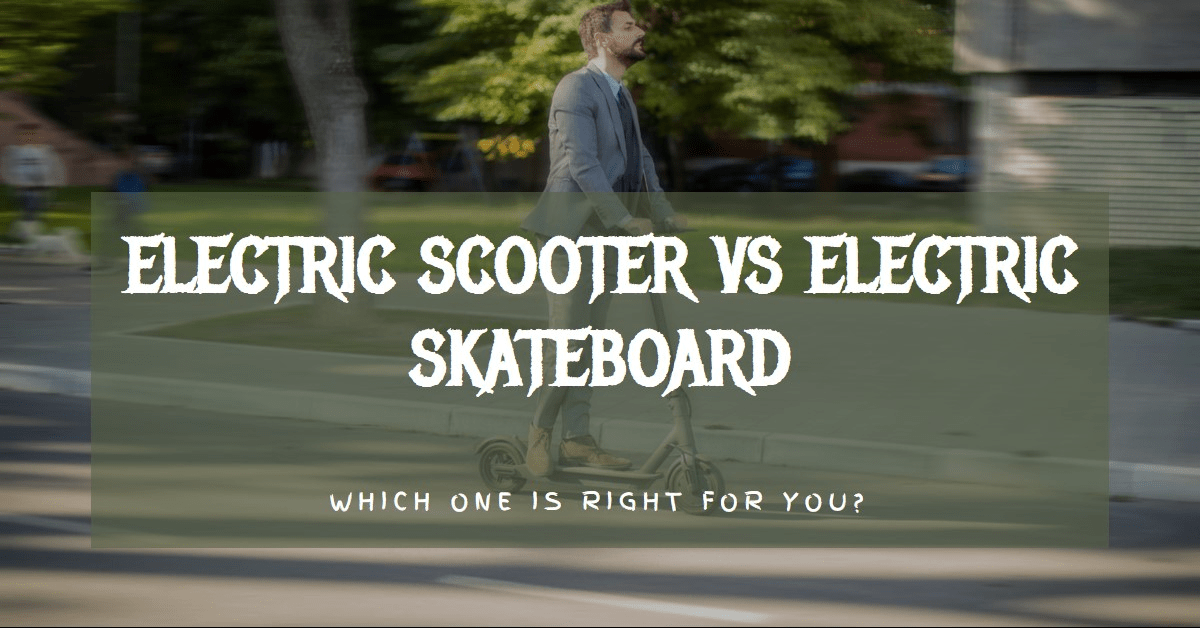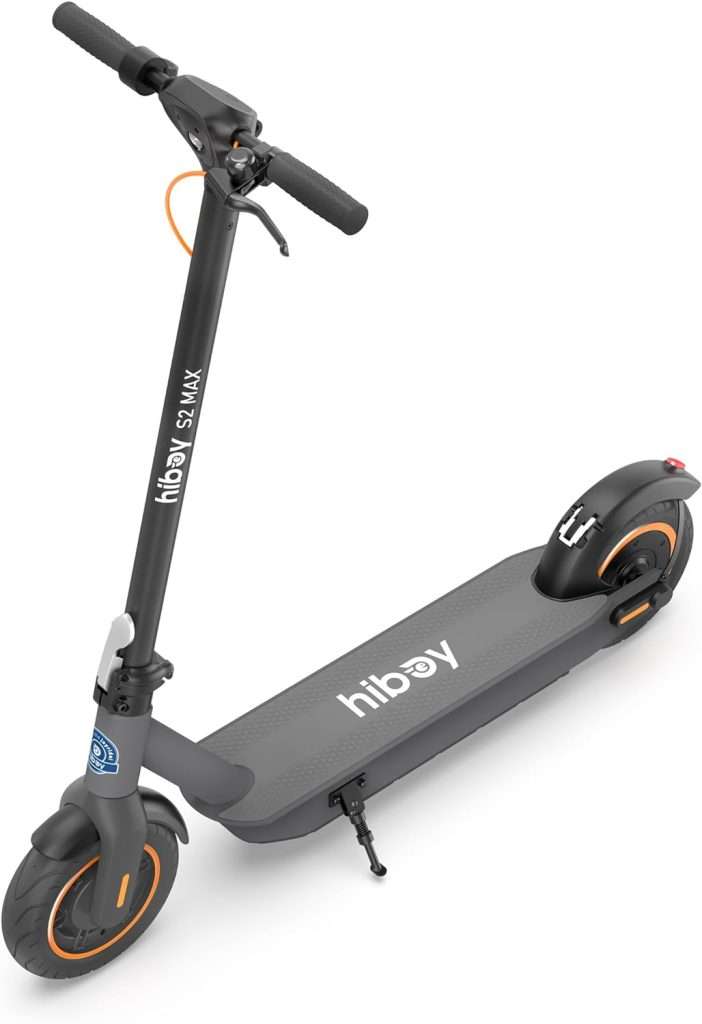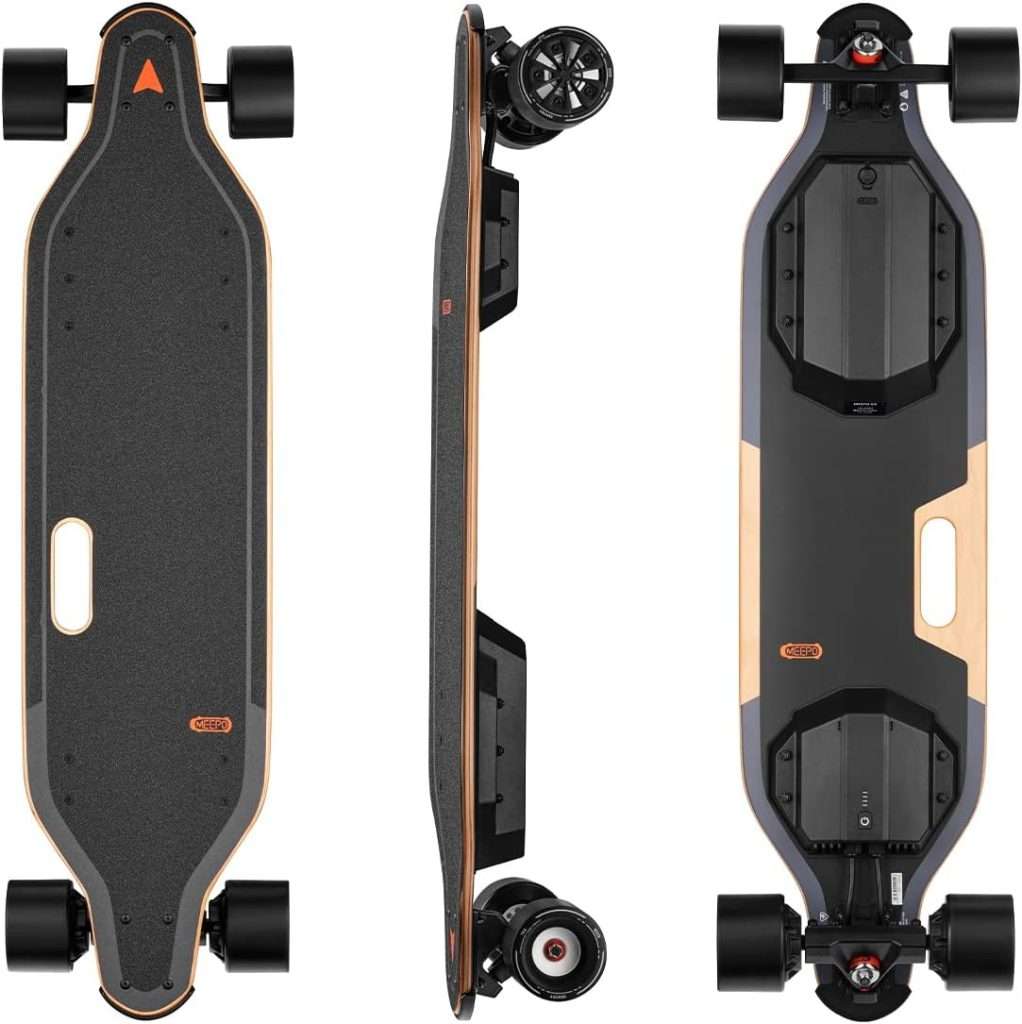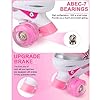adidas Women’s VL Court 3.0 Sneaker
Razor Jr. Lil’ Kick – 3-Wheel Kick Scooter for Younger Children (Ages 3+), Max Rider Weight 44 lb (20 kg)
35% OffElectric scooters and electric skateboards have both exploded in popularity in recent years as fun, eco-friendly modes of urban transportation. But how do you choose between an electric scooter or an electric skateboard?
In this comprehensive guide, we’ll compare every aspect of electric scooters and skateboards to help you decide which is best for your needs. We’ve researched the top models on the market and tested them hands-on, so you can feel confident in your purchase.
Key Differences Between Electric Scooters and Skateboards
Before we dive into the details, here’s a quick overview of the main differences between electric scooters and skateboards:
- Riding style – Scooters are stood on like a traditional kick scooter, while skateboards are ridden like a skateboard. Scooters offer more stability while skateboards require balance and coordination.
- Terrain – Scooters perform better on smooth, paved surfaces while skateboards can handle rougher terrain including cracks and small bumps.
- Speed – Top electric scooters can reach 15-30 mph, while skateboards usually top out at 20-25 mph.
- Range – Many scooters offer 15-40+ miles of range, more than most skateboards at 7-15 miles.
- Weight – Scooters weigh 25-45 lbs on average, less than the typical 10-15 lb skateboard.
- Price – Electric scooters start around $300-$500, while skateboards start at $500-$1000.
Now let’s explore each category in more depth to help you choose the best option.
Riding Style
The biggest difference between electric scooters and skateboards is the riding position and style.
Electric Scooters
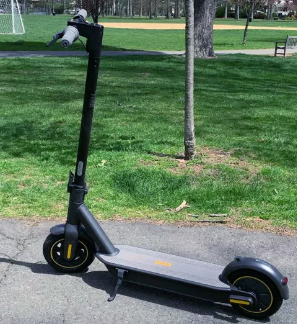
Electric scooters are similar to traditional kick scooters, with a vertical stem and handlebars. You stand upright on a platform between two small wheels, leaning slightly forward. Handlebars up to 40″ wide give you stability and control.
Riding a scooter is intuitive and feels natural to most people. It’s similar to riding a bicycle but requires less balance and coordination since you’re holding on with your hands. Many people feel instantly comfortable on a scooter.
Electric Skateboards

Electric skateboards resemble traditional skateboards but with a motor inside. You stand sideways on a deck 4-10″ off the ground, balancing on four small wheels. A handheld remote controls acceleration and braking.
Riding an electric skateboard requires good balance, coordination, and practice. It has a steeper learning curve than a scooter. New riders should practice first at slow speeds in open areas until they gain confidence.
So which riding style is best for you? Here are some things to consider:
- Experience level – Beginners find scooters easier to learn on and safer overall. Skateboards require skateboarding experience.
- Terrain – Scooters handle uneven terrain better with their larger wheels and handles for stability. Skateboards require smooth pavement.
- Physical ability – Those with conditions affecting balance or coordination may feel more comfortable on a scooter.
- Fun factor – Skateboards promote a surfing-like feeling that some find thrilling. Scooters are more utilitarian.
- Portability – Carrying a scooter takes coordination to balance the weight. Skateboards are easier to hold.
For many commuters and casual riders, electric scooters provide the most accessible riding experience. But skateboarders love the sensation of floating on a board. Consider your abilities to determine which suits you best.
Speed
Top speed is another key difference between electric scooters and skateboards.
Electric Scooter Speed
Most electric scooters reach 15-25 mph, while high-performance models can hit 30 mph or more. Here are some top maximum speeds:
- Unagi Model One – 15 mph
- Segway Ninebot Max – 18 mph
- Xiaomi Mi Electric Scooter Pro 2 – 25 mph
- Kaabo Wolf Warrior 11 – 50 mph
Faster scooter models typically have larger batteries and motors. Laws commonly restrict electric scooters to 15-20 mph in public areas.
Electric Skateboard Speed
Electric skateboards generally reach 20-25 mph at the top end, with some high-performance boards hitting 30+ mph. Some examples:
- Boosted Mini – 20 mph
- Backfire G2 – 25 mph
- Evolve GTR – 30 mph
- Bioboards Thorium X4 – 40 mph
Skateboard speeds are limited by the size of the deck and stability at high speeds. Most riders feel 15-25 mph is fast enough for safety and control.
So electric scooters have the overall speed advantage in most cases. Faster acceleration and higher top speeds allow you to keep up with traffic and commute quickly. But skateboards offer plenty of speed for recreational use.
Range
Range is a key factor when choosing between electric scooters and skateboards. Longer range means you can ride farther between charges.
Electric Scooter Range
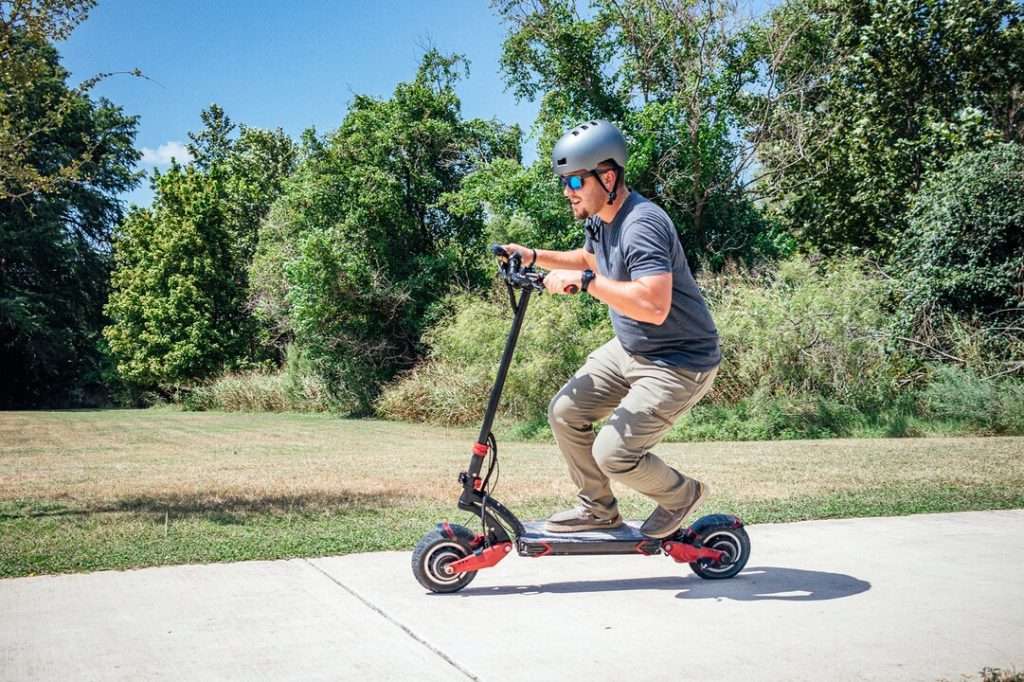
Most electric scooters offer 15-30 miles of range on a full battery charge. Some examples:
- Xiaomi Mi Electric Scooter – 18 miles
- Gotrax GXL V2 – 20 miles
- Segway Ninebot Max – 40 miles
Higher-end scooter models may get 30-50 miles of range by utilizing larger batteries. Real-world range depends on rider weight, hills, speed, and other conditions.
Electric Skateboard Range
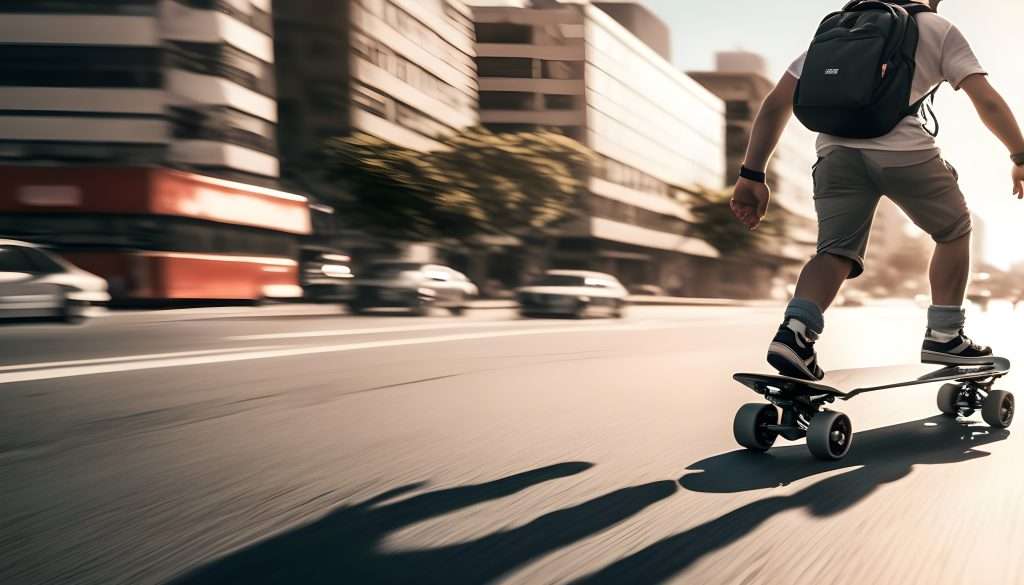
Electric skateboards typically achieve 7-15 miles of range per charge. For example:
- Boosted Mini X – 14 miles
- Backfire Zealot – 10 miles
- Evolve Stoke – 14 miles
- Inboard M1 – 7 miles
The smaller batteries and motors on skateboards limit their range. Weight also impacts range – heavier riders will get fewer miles.
For urban commuting and running errands, electric scooters provide longer range in most cases. Their larger batteries allow riding for hours between charges. Skateboards work better for shorter recreational trips.
Weight
On average, electric scooters weigh less than skateboards, making them easier to carry.
Electric Scooter Weight
Most electric scooters weigh between 25-45 lbs. Some popular examples:
- Xiaomi Mi Electric Scooter – 27 lbs
- Segway Ninebot ES4 – 37 lbs
- UberScoot 1600w – 41 lbs
Factors like aluminum frames, air-filled tires, and suspension systems contribute to scooter weight. But overall, they are designed to be portable using built-in stems or handles.
Electric Skateboard Weight
Electric skateboards typically weigh between 10-15 lbs. A few examples:
- Boosted Mini X – 17 lbs
- Backfire G2T – 14 lbs
- Onboard Bamboo – 10 lbs
Skateboards utilize lightweight materials like bamboo and carbon fiber to minimize weight. Their small size also contributes to portability.
For carrying over distances or up stairs, electric scooters have the weight advantage. Their built-in handlebars make lifting easier. Skateboards are more awkward to carry but weigh less overall.
Terrain Handling
Electric scooters and skateboards perform differently when riding over various terrain.
Electric Scooter Terrain Handling
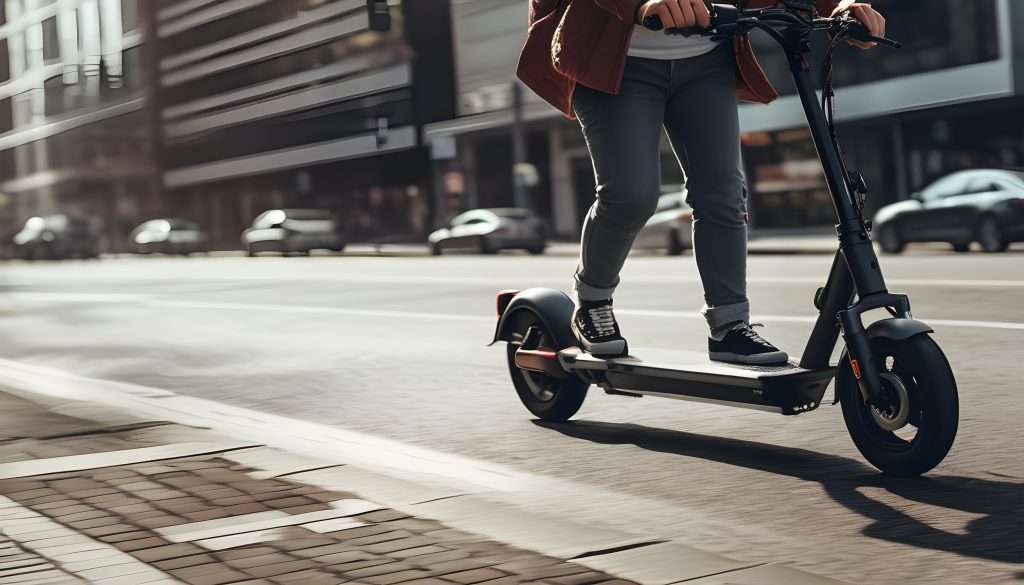
With their large air-filled tires and suspension, electric scooters can absorb bumps and handle uneven terrain well. Models like the Dualtron Thunder with 12″ tires and rear suspension can even tackle dirt trails and grass.
Most electric scooters perform best on paved surfaces but can manage:
- Bumps and cracks
- Gravel roads and packed dirt
- Grass, mud, and sand to some degree
Off-roading depends on the model, but rugged scooters with fat tires can handle almost any terrain. Even standard models work well on various urban surfaces.
Electric Skateboard Terrain Handling
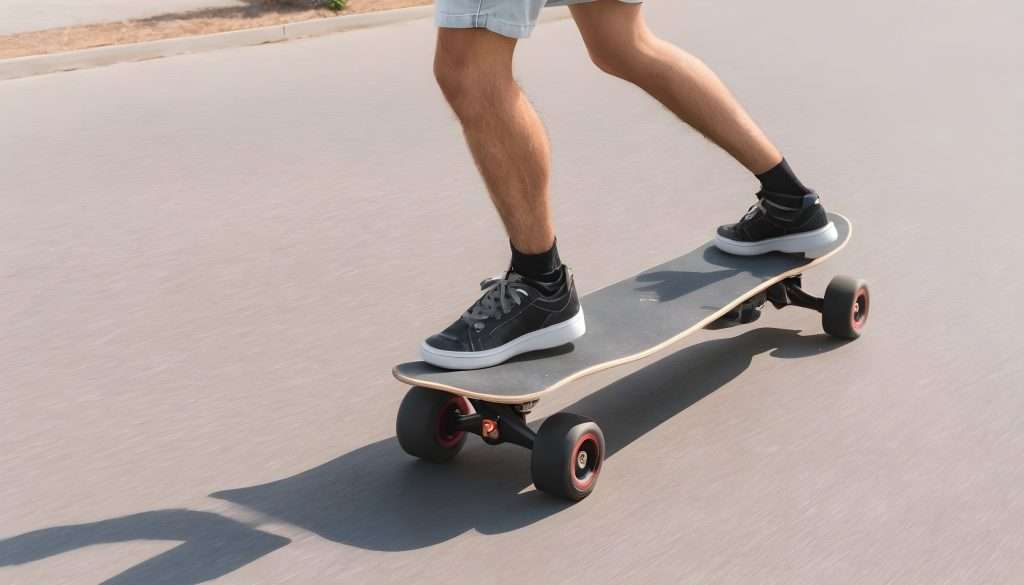
Electric skateboards rely on small, hard urethane wheels for an optimal ride on smooth pavement. While they can tackle small bumps and cracks, rougher terrain is challenging.
Skateboards work best on:
- Sealed asphalt
- Concrete
- Level ground
They struggle on surfaces like:
- Cracks and bumps
- Gravel
- Grass and mud
- Steep hills
All-terrain skateboard models feature larger air tires and higher clearance for off-road ability. But most electric skateboards are built for paved paths and roads.
For riding downtown and commuting on varying city surfaces, electric scooters perform better. Skateboards excel on smooth skateparks and paths optimized for small, hard wheels. Consider your riding environment when choosing between the two.
Costs
Electric scooters start at lower prices on average, making them more budget-friendly overall.
Electric Scooter Costs
Entry-level electric scooters can be found for $300 to $500. These include models like:
- GoTrax GXL V2 – $298
- Gotrax G4 – $399
- Swagtron Swagger 5 Elite – $399
Mid-range models in the $500 to $1000 range like the Ninebot Max offer longer range and better performance.
High-end electric scooters from Apollo and Dualtron can cost $1000 to $3000. These feature large batteries, speed, and premium materials.
Expect to spend $500 to $1500 for a quality electric scooter suitable for commuting and regular use.
Electric Skateboard Costs
Most electric skateboards start at $500 to $1000. Some examples in this range:
- Teamgee H20 – $569
- Backfire G2 – $699
- Wowgo 3 – $799
Premium electric skateboards can cost from $1000 up to $2000+. Higher prices bring better speed, range, hill climbing, and construction quality.
For a reliable electric skateboard from top brands like Boosted, Evolve, and Inboard, expect to invest $1000 to $1800. DIY kits can lower costs for experienced builders.
Overall electric scooters provide better value for budget-minded riders. Skateboards carry a premium price but some find them worth the investment.
Urban Commuting
For navigating crowded city streets, riding to work or school, and daily transportation, electric scooters have some advantages.
Why Electric Scooters Excel at Commuting
- Higher speeds keep up with urban traffic
- Longer range enables riding all day or farther distances
- Larger tires absorb rough city terrain like sidewalk cracks
- Upright stance for better visibility in traffic
- Storage space on baseboards to hold items
- Kickstand allows easy parking and storage when not riding
Skateboard Commuting Considerations
- Shorter range requires charging more frequently
- Small hard wheels rougher on imperfect urban terrain
- Lower stance makes seeing around cars and pedestrians harder
Electric scooters allow faster speeds with greater stability, making them ideal urban vehicles. Just be sure to wear a helmet and follow traffic laws for safety.
For short-distance commutes under 5 miles, electric skateboards also work well and many urban riders love their nimbleness. But longer trips favor electric scooters.
Recreational Riding
While electric scooters excel at utilitarian transportation, skateboards are optimized for recreational riding and thrills.
Electric Skateboards for Fun
- Carving and maneuvering provides surfing-like feel
- Lower deck promotes agility for tricks and skills
- Small wheels offer smooth ride on skateparks and bowls
- Kicktail allows ollies, jumps, and other tricks
Skateboarders love the sensation of “flowing” on a board. Maneuverable decks, smooth wheels, and lightweight builds make them ideal for recreation. Add an electric motor and they become even more fun.
Scooters for Fun and Adventure
- Higher speeds create an adrenaline rush (safely)
- All-terrain models extend riding to nature trails
- Longer range lets you ride for hours non-stop
- Higher weight capacity suits larger riders
- Built-in lights allow night riding
While not as maneuverable as skateboards, electric scooters provide exhilarating speed and range for adventuring. They open up destinations farther from home for days of fun.
Skateboards work best for free-flowing recreation, but e-scooters can also provide miles of smiles. Ultimately riding preference and style should drive your choice.
Portability
Between classes, on public transit, or stowing in a car, an electric rideable’s portability matters.
Electric Scooter Portability
- Built-in stems or handles make lifting and carrying easier
- Folding mechanisms on many models for storage
- Weigh 25-45 lbs on average
- Can be rolled on wheels when powered off
While not lightweight, scooters offer good portability thanks to clever designs. Look for options with folding stems, rotating handlebars, and one-step folding.
Electric Skateboard Portability
- Typically weigh 10-15 lbs for easy carrying
- Compact shape and size takes up little space
- Deck handles provide grab points for lifting
- Small overall footprint; easy to stash places like lockers
Skateboards win for outright weight and small storage footprint. Taking them into public places can be easier than larger scooters.
For a combo of portability, weight capacity and performance, look for electric scooters with sturdy yet compact folding frames. Or opt for smaller shortboard skateboards you can tuck most anywhere.
Safety
Both electric scooters and skateboards require riding skill and safety awareness. Here are factors to consider:
Electric Scooter Safety
- Handlebars and platform provide stability
- Lower learning curve than skateboards
- Suspension and brakes absorb bumps and allow quick stopping
- Higher visibility in traffic than skateboards
- Heavier weight can make sudden falls unlikely
Electric Skateboard Safety
- Higher injury risk from falls due to speed and balance needs
- No brakes; riding skill required to foot brake
- Remote power button minimizes uncontrolled rollaways
- Lower height harder for cars to see
Ultimately, safety comes down to wearing protection and riding defensively:
- Always wear a helmet & protective gear
- Learn proper riding technique before going fast
- Stay alert scanning for road hazards
- Brake early and maintain control of speed
- Avoid roads with fast traffic
- Take a safety class if new to riding
While electric scooters offer some safety advantages, neither option is foolproof. Take responsibility through proactive safety habits and gear.
Winner? Electric Scooters vs. Skateboards
So which is better overall – electric scooters or skateboards?
For versatility, commuting ability, and value, electric scooters come out ahead for most riders. Their combination of speed, range, seating position, and terrain handling make them optimal urban vehicles. From short trips across town to 30+ mile joyrides, electric scooters fit the bill.
However, electric skateboards excel at providing an exciting riding experience. Their maneuverable decks, tight turning radius, and smooth wheels create a surfing-like feeling beloved by boarders. Small, light, and responsive, they bring smiles mile after mile.
The right choice comes down to your priorities:
- Electric scooters – Practical transportation for commuting, errands, and daily driving around town. Best for flatter terrain and longer distances.
- Electric skateboards – Recreational riding to carve up the streets or hit the skatepark. Most exciting riding experience.
For a first electric rideable, start with an entry-level scooter to get acquainted with battery-powered mobility. But if you’ve got skateboarding experience already, an electric skateboard may call your name. And some dedicated riders eventually end up with both in their garage!
Use this guide to weigh all the comparisons – then get ready to ride this exciting new era of transportation. Electric power, zero emissions, and big fun await. Let’s ride!

I’m the founder of HoverboardsGuide.com, a comprehensive website dedicated to electric scooters and hoverboards. With a deep-rooted passion for electric gadgets, I’ve accumulated extensive experience in this field. I aim to assist users in selecting the best gadgets and providing reliable guidance.
I’ve tested and reviewed numerous models, gaining in-depth knowledge about their features, performance, and overall quality. Feel free to reach out to me with any queries, as I’m dedicated to addressing your concerns promptly. Join me on this exciting journey of exploring the world of electric rides and making informed decisions

